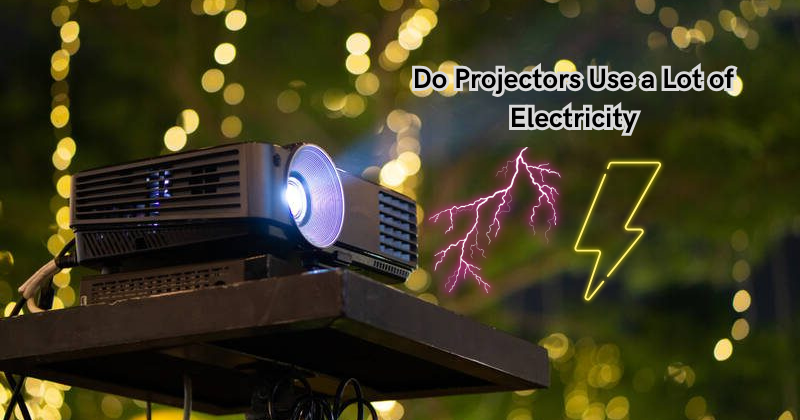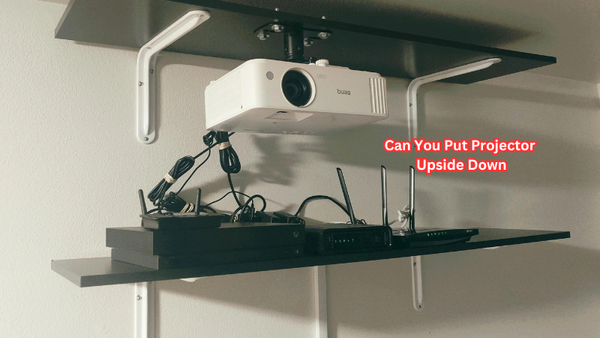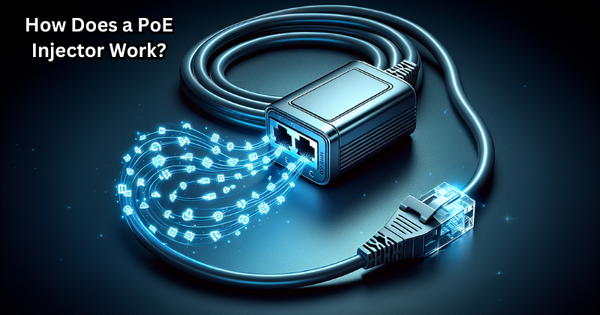Projectors, ubiquitous in both professional and personal settings, have become indispensable tools for presentations, entertainment, and educational purposes. However, a common concern lingers: do projectors use a lot of electricity?
This question is pivotal in an era where energy conservation is paramount. Projectors vary in power consumption depending on technology, brightness, and usage patterns. Understanding the electricity consumption of projectors is crucial for informed decision-making, whether for business operations or eco-conscious consumer choices.
In this exploration, we delve into the intricacies of projector power consumption, shedding light on these widely used devices' environmental and economic implications. We also provide practical tips for reducing energy usage without compromising projected content quality.
Understanding Projector Power Consumption
Projectors consist of various components, each consuming varying levels of electricity. The most significant contributor to power consumption in a projector is its lamp or bulb. Other parts, such as cooling fans, lenses, and circuitry, also require electricity to function. The type of technology used in projectors also plays a significant role in determining power consumption. Here are a few common types and their associated power usage:
- LCD (Liquid Crystal Display) Projectors: This type of projector uses three LCD panels to display images. While they are known for producing vibrant and accurate colors, they require more electricity to function compared to other technologies.
- DLP (Digital Light Processing) Projectors: DLP projectors use a single chip with tiny mirrors to reflect light and produce images. They are generally more energy-efficient than LCD projectors.
- LED (Light Emitting Diode) Projectors: LED projectors use an array of LEDs to create the projected image. They consume less electricity compared to LCD and DLP projectors, making them a popular choice for eco-conscious consumers.
- Laser Projectors: These projectors use laser diodes to produce light and create images. They are the most energy-efficient option, consuming significantly less electricity than other technologies.
LCD projector lamp life typically ranges from 2000 to 6000 hours, while DLP projector lamps can have a lifespan of up to 20,000 hours. LED and laser projectors have an even longer lifespan, ranging from 20,000 to over 50,000 hours. A projector's power consumption is also affected by its brightness setting. Generally, the brighter the image, the more electricity is consumed.
Do Projectors Use a Lot of Electricity?
The answer to this question is not as straightforward as it may seem. The power consumption of a projector depends on various factors, including technology, type of lamp used, and usage patterns. For instance, an LCD projector using a 300-watt lamp will consume more electricity than an LED projector with a 150-watt lamp. How much electricity a projector uses ultimately depends on the needs and preferences of the user.
According to the US Department of Energy, the average power consumption of a projector ranges from 250 to 400 watts. This is comparable to other common household electronics such as desktop computers and televisions. However, if used for extended periods, projectors can contribute significantly to electricity bills.
Next, we discuss factors that can influence the power consumption of projectors and practical tips for reducing energy usage.
Factors Affecting Projector Power Consumption
Apart from the technology used, several other factors can impact a projector's power consumption. These include:
Brightness:
As mentioned earlier, the brightness setting of a projector can significantly affect its power consumption. Reducing the brightness level can result in lower electricity usage without compromising image quality. Battery-powered projectors also have energy-saving modes that can help reduce power consumption.
Usage Patterns:
How often and for how long a projector is used can also impact its electricity usage. For example, leaving a projector on standby mode consumes almost as much electricity as when it is in use. Turning off the device when not in use can help reduce energy consumption.
Ambient Temperature:
Projectors tend to consume more electricity in warmer environments as their cooling fans have to work harder to prevent overheating. Keeping the room at a cooler temperature can help reduce power usage.
Projection Technology:
As mentioned earlier, the technology used in projectors plays a significant role in determining power consumption. Choosing an energy-efficient projector can help reduce electricity usage and costs. LCD technology is generally the most power-intensive, while laser technology is the most energy-efficient.
Resolution and Color Processing:
Higher resolution and color processing can also impact the power consumption of a projector. More pixels require more energy to display, resulting in higher electricity usage. Modern projectors have energy-saving features that can help reduce power consumption while maintaining image quality.
Environmental Factors and Room Size:
The reflective properties of the projection surface and the size of the room can also affect power consumption. A smaller room with a darker wall color will require less brightness, resulting in lower electricity usage.
Type of Media and Projector Age:
Lastly, the type of media being projected and the age of the projector can also influence power consumption. Content with bright colors or fast-moving images may require more power to display.
Older projectors tend to use more electricity as they are not as energy-efficient as newer models. More power-efficient models are constantly being developed, so it's worth considering an upgrade to reduce electricity usage.
Environmental and Economic Implications
Given the widespread use of projectors in various industries, their power consumption can have a significant impact on the environment and electricity costs. Projectors that consume large amounts of electricity contribute to greenhouse gas emissions and deplete natural resources. Additionally, high energy usage translates into higher electricity bills for businesses and individuals.
Furthermore, the disposal of used bulbs or lamps from projectors can also have adverse effects on the environment. These bulbs often contain toxic chemicals such as mercury, which can contaminate landfills and harm ecosystems if not disposed of properly.
Best Way to Measure the Power Consumption of Your Projector
To accurately determine the electricity usage of your projector, you can refer to its user manual or check the manufacturer's website for specifications. Most projectors also come with an energy guide label that provides an estimate of their annual energy consumption and cost. How much power your projector is using, a plug-in energy meter can be used to measure its power consumption in real time. Basic projector monthly consumption can also be estimated by multiplying its wattage by the number of hours it is used per month.
Another way to measure power consumption is by using a wattmeter, which can be plugged in between the projector and power source to measure the electricity usage in real time. This can help identify areas where energy consumption can be reduced.
Tips for Reducing Projector Power Consumption
There are several measures that can be taken to reduce projector power consumption without sacrificing performance. These include:
- Choosing an energy-efficient projector: As mentioned earlier, LED and laser projectors are the most energy-efficient options available.
- Opting for a lower brightness setting: In many cases, the highest brightness setting is not necessary and can be reduced without compromising image quality.
- Utilizing eco-mode or energy-saving mode: Enabling these modes can significantly reduce power consumption without affecting the quality of projected content.
- Turning off the projector when not in use: This may seem obvious, but many people forget to turn off projectors when they are not in use, resulting in unnecessary energy consumption.
- Proper Ventilation: Ensuring that the projector is placed in a well-ventilated area can help prevent overheating and reduce the need for cooling fans to work harder.
By implementing these tips and considering the factors that affect power consumption, individuals and businesses can reduce their environmental impact and save on electricity costs while using projectors.
FAQs
Is it expensive to run a projector?
The cost of running a projector depends on various factors, such as power consumption, usage patterns, and electricity rates. However, the cost can be minimized with proper usage and energy-efficient projectors.
Is it safe to run a projector all day?
Projectors are designed to be used for extended periods, but it is recommended to allow them to cool down periodically to prevent overheating.
Are there any energy-efficient projectors on the market?
Many manufacturers offer energy-efficient projectors with features such as low-power consumption modes and LED or laser technology. Plus, upgrading to newer models can also help reduce electricity usage.
Do projectors save energy?
Using an energy-efficient projector and implementing power-saving measures can help reduce electricity consumption. However, the energy saved may vary depending on usage patterns and other factors.
Conclusion
In conclusion, the energy consumption of projectors is a multifaceted aspect influenced by technological advancements and user behavior. While early projector models may have been associated with significant power usage, modern iterations have embraced energy-efficient technologies such as LED and laser light sources and eco-friendly operating modes.
Additionally, users can optimize power consumption by adjusting brightness settings and utilizing energy-saving features. Understanding these dynamics empowers individuals and organizations to make environmentally conscious decisions when integrating projectors into daily activities. As technology continues to evolve, the trend toward energy efficiency in projectors will likely persist, offering users the benefits of enhanced sustainability without compromising performance.
By staying informed about the energy usage of projectors and leveraging available features, users can effectively manage electricity consumption while enjoying the versatility of projector technology.





